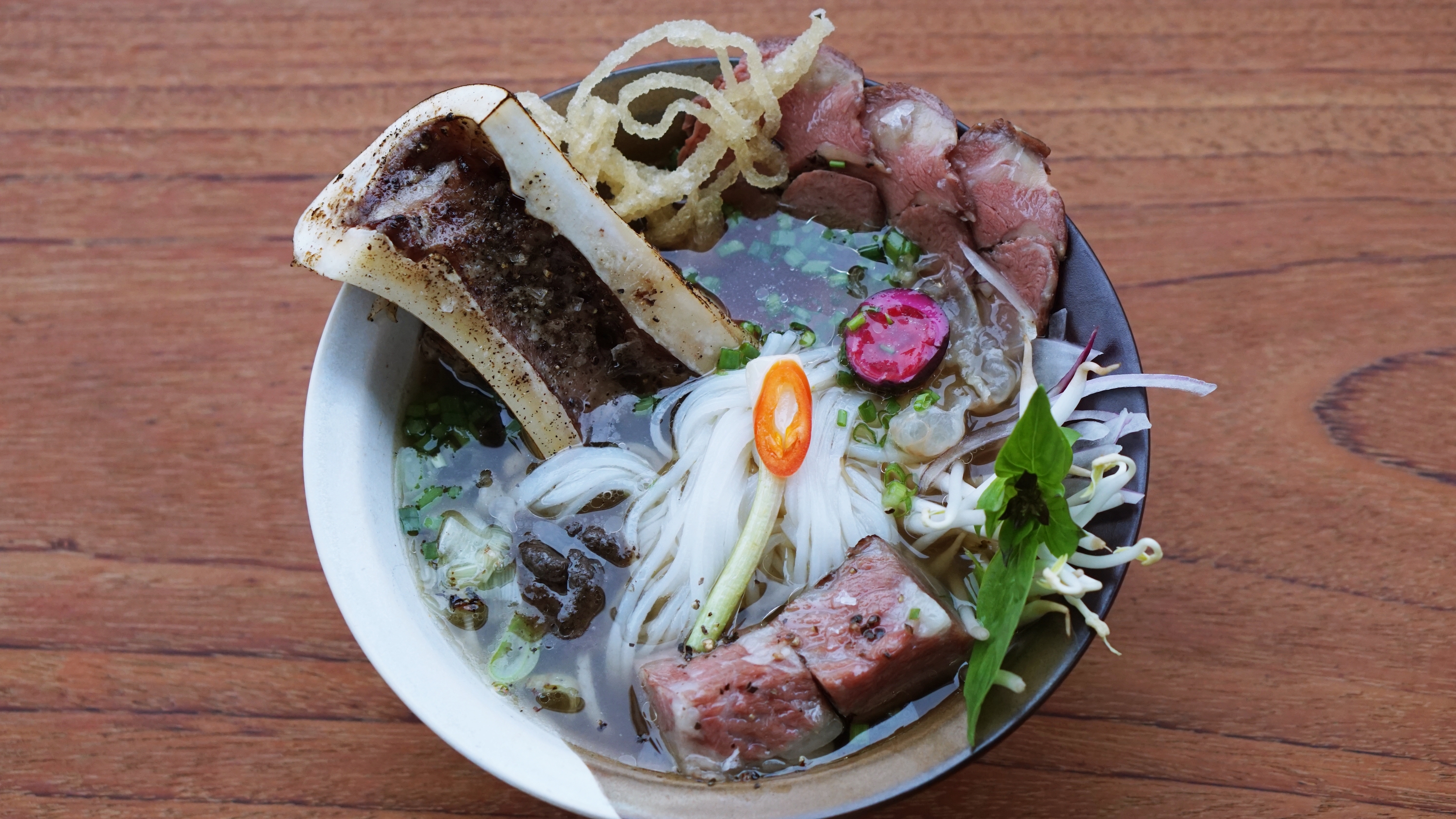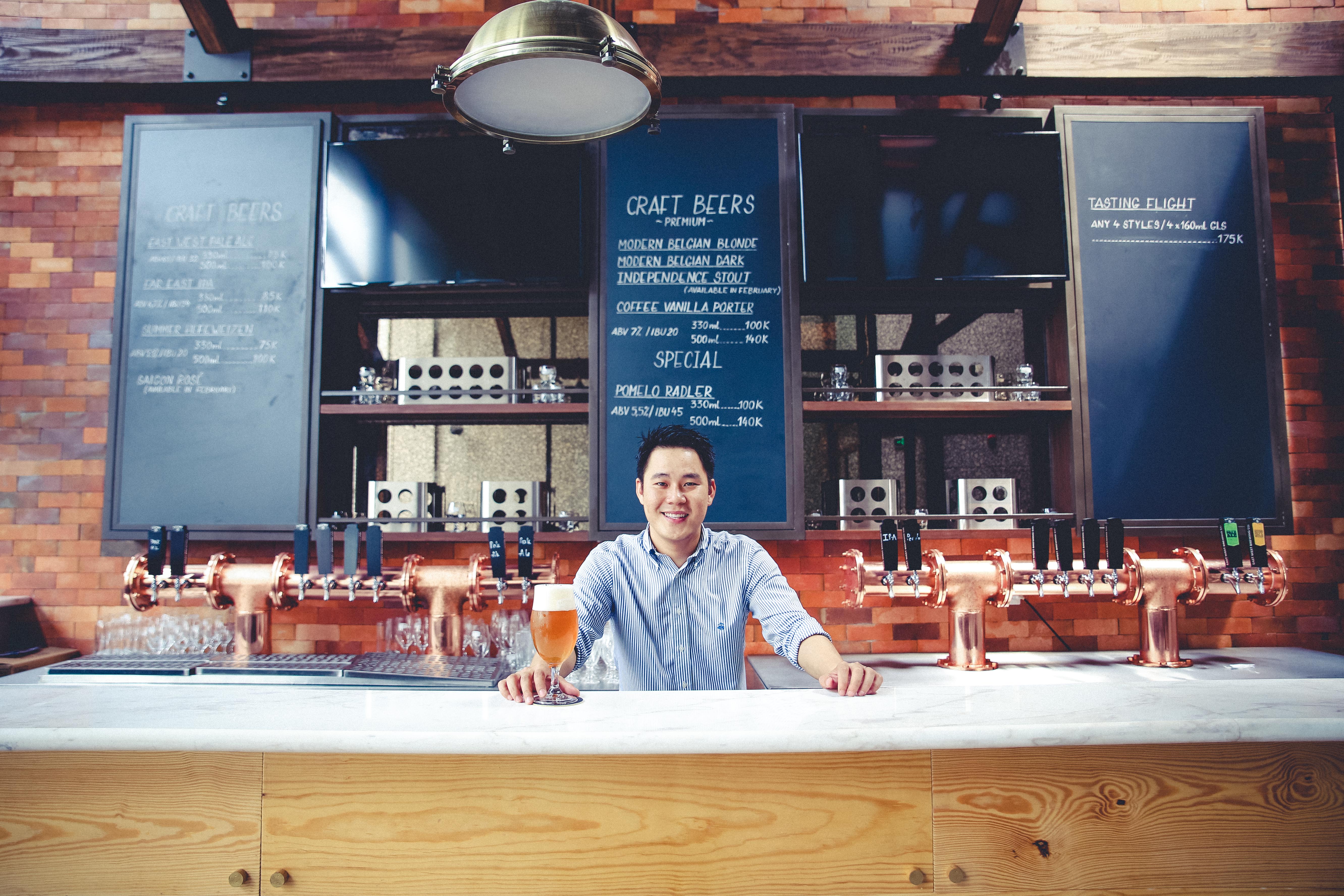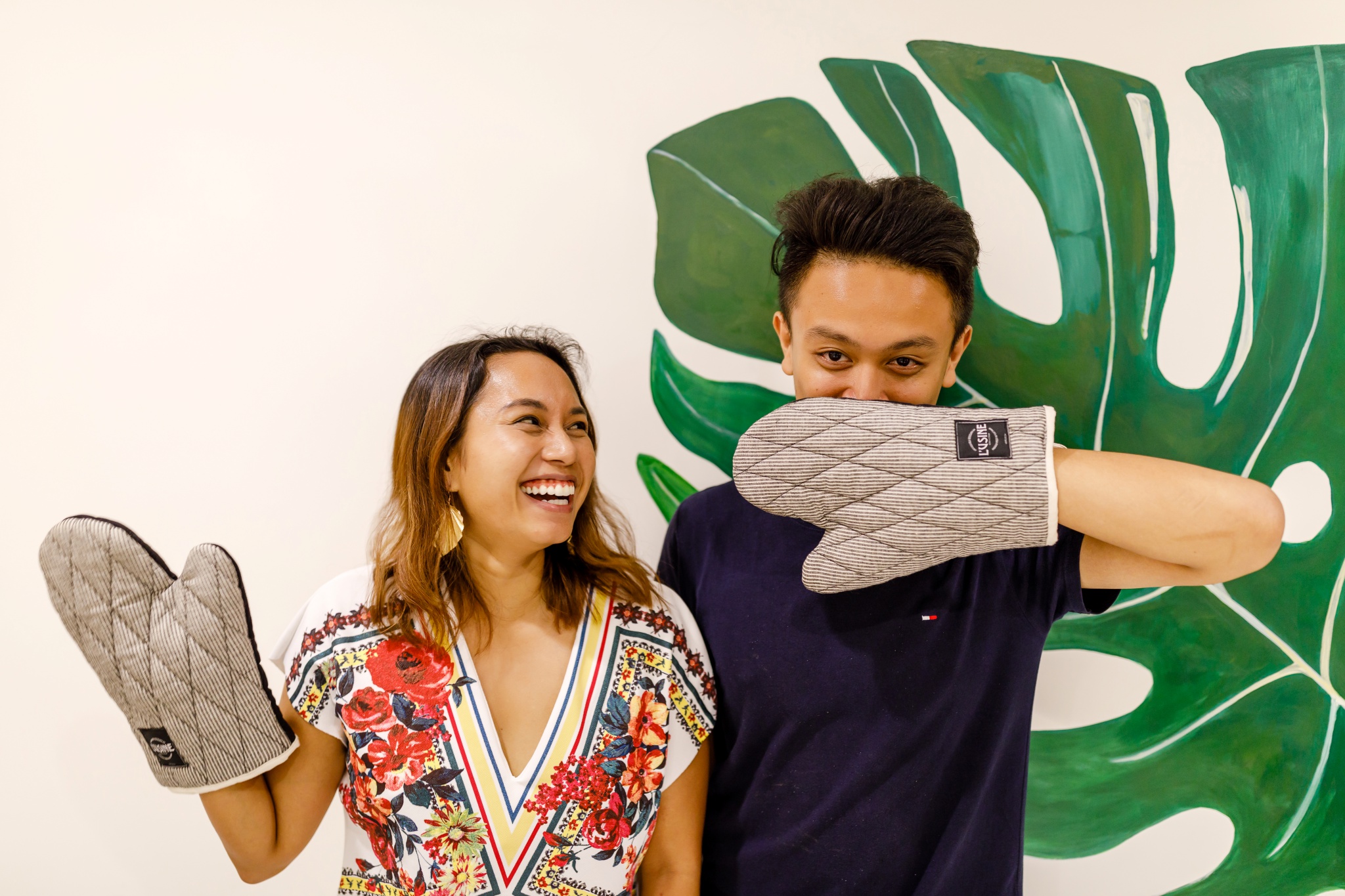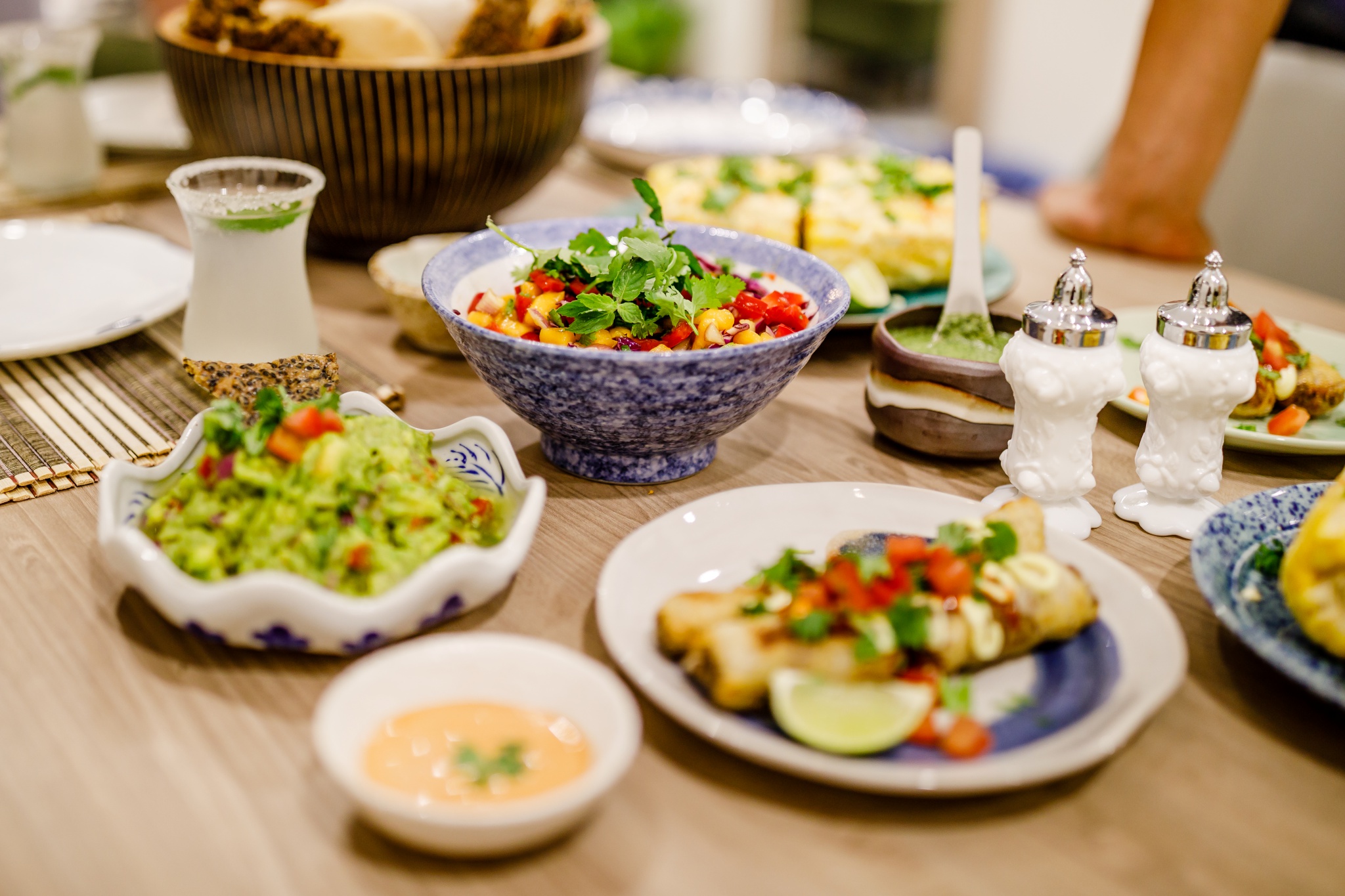At the age of six, Loc Truong joined the nearly two million of his countrymen who fled Vietnam following the fall of Saigon. After resettling in San Diego, California, he grew up as an average refugee teenager, never thinking he’d return to the country his family had once left behind—until a stop in Vietnam during a collegiate semester at sea planted a seed in his mind.
Years later, while working at Wachovia Bank in 2008, Truong packed his bags and booked a one-way ticket to Saigon, using his bilingualism and American background to land himself a job at a reputable Vietnamese real estate company. Still, he had other aspirations. In 2011, Truong helped open the immensely popular Chill Skybar, the first of many rooftop watering holes that would soon pop up across the skyline of Ho Chi Minh City (also called Saigon).
Videos by VICE
“It was an international concept—both Vietnamese and western-operated—with a mixologist and more western-style music like hip-hop and house,” explains Truong. “From then on, many new ‘sky bars’ opened up, competing with each other and ultimately lifting overall standards for food-and-beverage and entertainment in HCMC.”
A hip hop-soundtracked roof bar with fancy cocktails may not seem like a groundbreaking concept to reveling urbanites in New York or Los Angeles, but for the growing middle class of Saigonese armed with newfound disposable income, Chill and its contemporaries helped pave the way for a now-burgeoning scene of high-concept restaurants, bars, and breweries opened by repatriated members of the widespread Vietnamese diaspora, called Viet Kieu.
Though once considered derogatory, the term Viet Kieu is now used by Vietnamese locals simply to distinguish themselves from those who were born or live overseas. It also connotes a legal status—in 2004, the Communist Vietnamese government formally declared the diaspora an integral part of the Vietnamese community. By 2007, it had begun visa exemptions for those who could prove their Vietnamese origin. Today, Viet Kieu enjoy tax breaks, relaxed limits on property ownership and business licenses, as well as the ability to bring over foreign spouses and children.
These incentives take aim at the sheer spending power of Viet Kieu—in 2015, the World Bank found that remittances from overseas Vietnamese totaled about $13.2 billion. But they’ve also attracted millions of vacationers, retirees, and on-the-ground entrepreneurs who are flocking back to their homeland, bridging business acumen learned overseas with an inherited sensitivity to Vietnamese cultural nuances.
“The experience and perception of Viet Kieu in Vietnam has not always been positive,” says Peter Cuong Franklin, chef-owner at the new-school restaurant ănăn and ‘60s-inspired cocktail bar Nhau Nhau. “But the situation has improved significantly in the past few years. Viet Kieus are making great contributions in the creative fields such as food, art, literature, music, and fashion. They bring an international perspective and help to connect Vietnam with the rest of the world.”
Though Viet Kieus are uniquely united by the painful history of leaving their birth country, their individual stories tell of a group that’s anything but monolithic. Franklin, for example, grew up in the central mountain city of Da Lat, where his mother operated a small restaurant out of their living room. Fleeing Vietnam at age 12, he was adopted by an American family and raised on the East Coast of the US; in a story worth telling on its own, he was finally able to reunite with his birth mother 20 years later.
After attending culinary school and working as a chef in New York, London, and Hong Kong, Franklin headed to Vietnam two years ago to become one of the most highly-regarded Viet Kieu food pioneers, along with Vietnamese-Australian chef and TV personality Luke Nguyen, who owns restaurants in Australia and Vietnam, and Vietnamese-Danish chef Anh Le, a household name in Denmark who served as a judge on Top Chef Vietnam.

Franklin has dubbed his style of food cuisine mới, or “new Vietnamese,” for its traditional flavors-meets-modern techniques. While his inventive dishes—like the banh xeo taco, black truffle pho, and the stunt-y $100 truffle-and pate banh mi—have been recognized by international food media, including MUNCHIES, Franklin admits there are challenges locally for any business owner trying to create upmarket experiences in a poor country. But he believes these growing pains are necessary to show that Vietnamese cuisine is capable of honoring both its street-food backbone and a fine-dining future.
“The experience of trying to elevate Vietnamese cuisine has been quite challenging,” says Franklin. “But as Vietnam modernizes, food must also evolve and change to stay relevant. I believe that Saigon has great potential to be on the global culinary dining map, not only for inexpensive street food but also for creative cuisine, and I’ve been pleasantly surprised by the positive support that Anan Saigon has received from local Vietnamese people as well as international guests.”

The desire for Vietnamese locals to embrace these once-foreign concepts has also been reflected in a burgeoning craft coffee scene, according to Jap Hoang, the Vietnamese-Canadian founder of the popular café-meets-boutique lifestyle store L’Usine and furniture shop District Eight. Hoang, whose French-speaking family fled Vietnam in 1979 to resettle in Montreal, says it wasn’t easy getting locals on board initially.
“We faced so many challenges when we first opened L’Usine—from getting the local consumers in a space that was very different from what they are used to, then, educating them about products that they’ve only seen in international magazines,” says Hoang. “We were the first ones to introduce Vietnamese consumers to cupcakes!”
Likewise, after departing from Chill Skybar, Loc Truong tapped into his love of the West Coast’s craft beer scene, and a stint at a regional branch of Anheuser-Busch, to open a microbrewery and taproom called East West Brewing in 2016. What seemed like a daunting task then—getting Vietnamese consumers to put down their Heinekens and 333s for, say, an unknown, homegrown hefeweizen or coffee-vanilla porter—has become easier, in part thanks to the brand’s natural resonance with younger locals.

“Initially, when I had the plan of introducing craft beer, the main market I believed would be the main driver for our business was expat consumers,” Truong recalls. “But we were all proven wrong when local Vietnamese consumers came to our taproom. Now, our main business customers are Vietnamese—at about 80 percent.”
Nowadays, many Viet Kieus are returning to Vietnam not only for smart business opportunities, but also in search of creative freedom and a sense of belonging they didn’t find in the places they were living. Forty-three years after the end of the war, this group increasingly includes not just those who once escaped the country, but their second-generation children as well—often times against the will of their worried parents.

“As an Asian-American, especially one with a Vietnamese name, I’d experienced small bits of discrimination, like having my name mispronounced or made fun of,” remembers Hao Tran, editor of the popular Saigon-based lifestyle site Vietcetera, which covers business, society, and culture in Vietnam. “But in Vietnam I never have that issue. Everyday life is easier. It’s just one less thing to think about.”
It was a single business trip to Vietnam that convinced Tran, a San Francisco native, to leave his job as an investment manager to relocate to Saigon at age 24. Since joining the Vietcetera team, Tran has also helped launch two locations of the brand’s stylish cafes, which are now operated by a Viet Kieu couple from Seattle, offering traditional Vietnamese milk coffee, local craft beer, and lemonades.

In reporting on Vietnam’s food-and-drink world, Tran says he’s seen many ambitious Viet Kieu-driven businesses both take off and fail spectacularly, and cautions that many Viet Kieu are still seen as naive in the eyes of locals. Still, he says a low barrier of entry offers a chance for savvy newcomers to become frontrunners within their respective niches.
“You could say that it’s a bit of a land grab here since there are so many concepts not yet done in Vietnam,” Tran explains. “If you can enter the market with a team, execution, vision, and a little bit of resources, you can make things happen. And there’s a good chance it’ll survive and thrive for a while.”

Houston native Tam Le, who moved to Saigon exactly one year ago, is carving out such a space for herself by fusing the Mexican flavors she enjoyed growing up with the Vietnamese dishes she ate at home. This month, she launched a new Viet-Mex puerto cerrada, or “secret” closed-door restaurant, called Saigonita to share what she sees as the quintessential Texas experience, pointing out that English, Spanish, and Vietnamese are the three most widely spoken languages in the state. On the menu: Vietnamese-Cajun tacos, an eggroll-taquito hybrid called Chaquito, and duck egg flan that uses coconut milk infused with pandan and lemongrass.

“Each menu item is very personal to me and tells a greater story about identity and migration, not just my own, but of greater populations across generations and continents,” explains Saigonita. “For example, tacos al pastor, that quintessential Mexico City dish, was actually brought over by Lebanese immigrants and now it’s so completely seen as Mexican. Or flan— it’s a beloved dessert in both Mexico and Vietnam, because it was brought over by the Spaniards and French respectively. But do you know where they got it from? The Roman Empire.”
Le says her reservation lists split evenly between “non-Vietnamese immigrants, local Vietnamese, and Viet Kieus,” and that the local reaction to her food has been overwhelmingly positive. (To her delight, she’s even seen her Vietnamese staff making her guacamole for themselves on more than one occasion). She views this work as way to give back to her parents’ homeland and honor its natural bounty.

“Our parents didn’t have a choice and had to leave Vietnam, but we now have the choice to come back, and do something—anything—in our small way to push this country further,” Le explains. “I’m on my knees in gratitude after each meal because we have a land that provides us with so many beautiful herbs and vegetables and fruits.”
For Le and so many other Vietnamese sons and daughters around the world, food has offered an avenue to reconnect with home—or at least the abstract ideal of it, anyways. “There’s a word in Spanish, querencia; it’s the place where one feels at home, where you’re your most authentic self,” she says. “It’s derived from the verb querer, which means desire.”
Remembering her fateful decision to finally move to Vietnam, she adds, “I desired Saigon so deeply. It got to a point where if I didn’t return to Vietnam every couple of months, I’d become homesick. Imagine that! Homesick for a place that was never actually your home—but maybe on some deeper level, Vietnam was always my home.”
More
From VICE
-

Photo: GK Hart/Vikki Hart / Getty Images -

Photo: ESA -

Screenshot: Jarrad Nolan / ATSB

